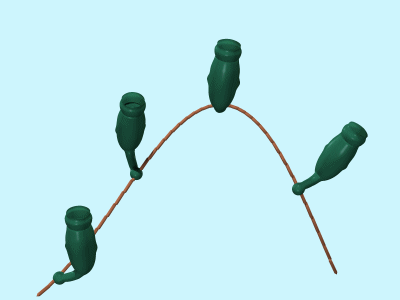Tuesday, July 23, 2013
Diskagma buttonii
This newly discovered fossil is probably the biggest find in biology for many decades. It seems to be a sort of generic base or beta-test for the form of most big plants and animals.
The authors sound overly restrictive, which is probably good science...

"They certainly were not plants or animals, but something rather more simple," said Retallack, professor of geological sciences and co-director of paleontological collections at the UO's Museum of Natural and Cultural History. The fossils, he added, most resemble modern soil organisms called Geosiphon, a fungus with a central cavity filled with symbiotic cyanobacteria.But the inference they draw from this restricted idea is not good science:
"This gains added significance because fossil soils hosting the fossils have long been taken as evidence for a marked rise in the amount of oxygen in the atmosphere at about 2.4 billion to 2.2 billion years ago, widely called the Great Oxidation Event."I don't see why it's "certainly not plants or animals." Assuming the image represents the organism and not just an enclosure or shell, the shape looks like several different simple animals. Sponges, hydras, bryozoa, rotifers, and those obscure tube-worm phyla. It also looks like part of a flowering plant or a 'flowering' fungus such as Indian Pipe. Could be any of those, or could be a common ancestor of all. Without DNA you can't pin it down precisely, and you can't assume it contained cyanobacteria that oxygenated the earth. Maybe the authors have more info besides the X-ray image? = = = = = Artistic note for Poser types: I've made a digital model of the critter. ZIP is here. Includes the OBJ form for other 3d apps. The Poser figure is bendable, and I've given it an openable 'mouth' just for fun. (I can be just as arbitrary and restrictive as you can!) Here's a fanciful animation with four of them attached to a stolon:

Labels: Grand Blueprint
